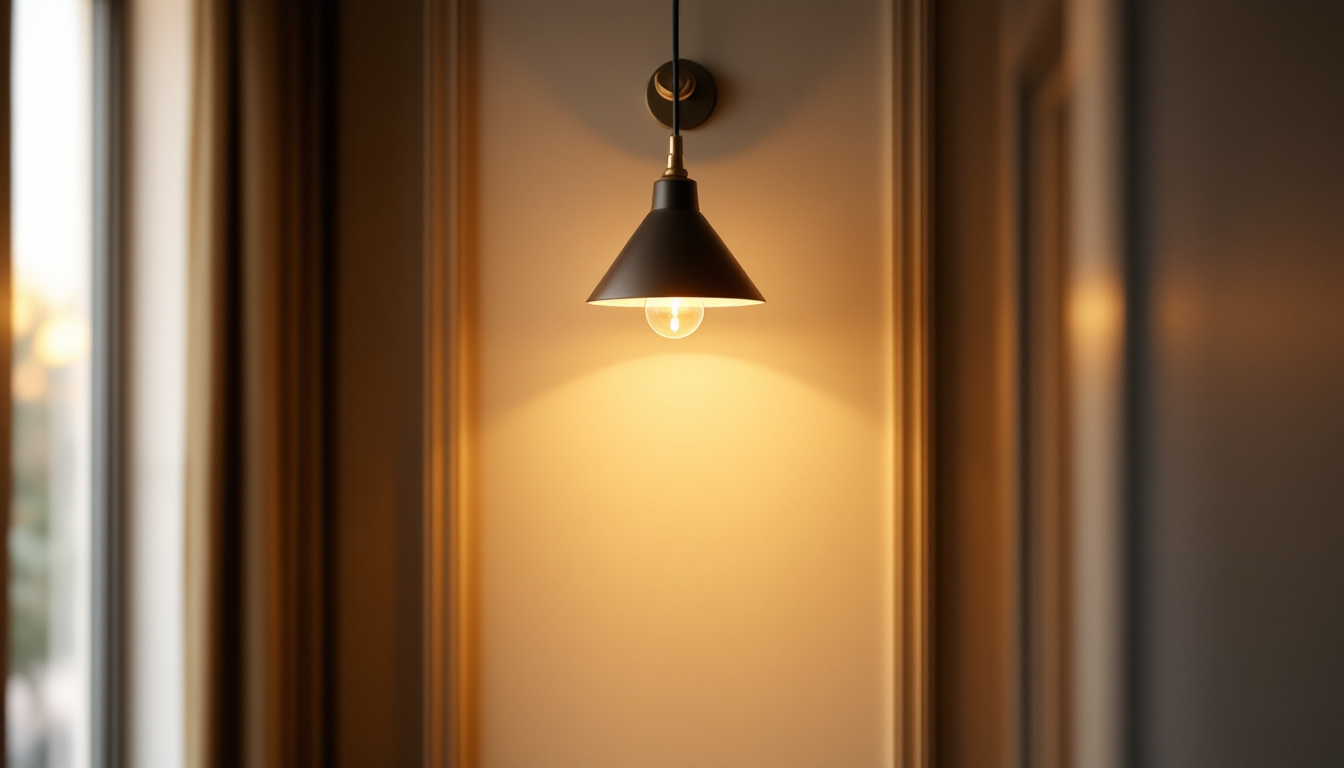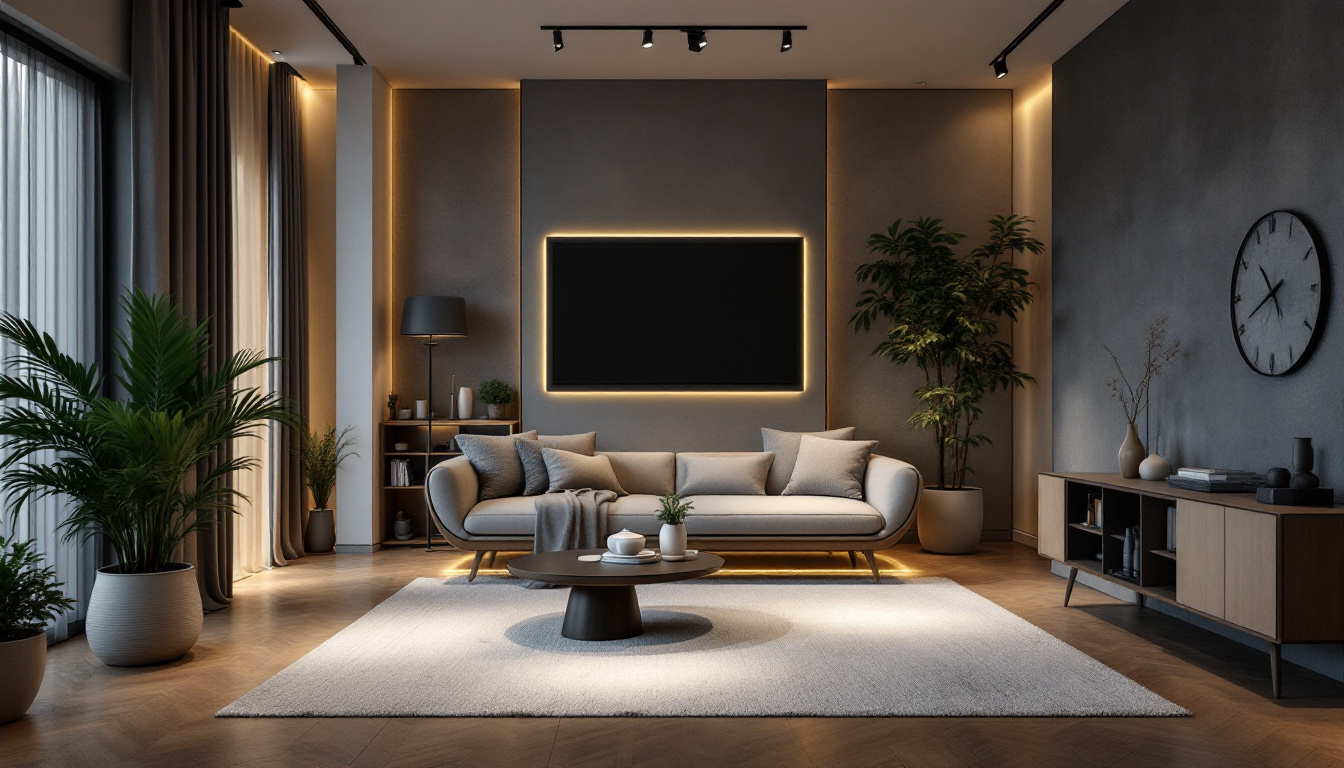
lighting contractors play a crucial role in shaping the ambiance and functionality of spaces. Hallways, often overlooked, require careful consideration when it comes to lighting fixtures. The right choice can enhance safety, aesthetics, and even the perceived size of a space. However, making mistakes in this area can lead to unsatisfactory results. This guide aims to outline common pitfalls to avoid when selecting light fixtures for hallways, ensuring a successful installation that meets both client expectations and safety standards.
Before diving into the specifics of fixture selection, it is essential to understand the unique requirements of hallway lighting. Hallways serve as transitional spaces, guiding occupants from one area to another. Therefore, the lighting should be functional, yet inviting.
The first step in selecting the right light fixture is to assess the space. Consider the width, length, and height of the hallway. A narrow corridor may require different lighting solutions compared to a spacious foyer. Additionally, think about the purpose of the hallway. Is it a high-traffic area, or does it serve as a quiet passageway? Understanding these factors will guide the selection process.
Moreover, consider how the hallway connects to other rooms. The lighting should create a seamless transition, complementing the adjacent spaces. This can be achieved by matching the style and brightness of fixtures in the hallway with those in connecting rooms. For instance, if the adjoining rooms feature warm tones and soft lighting, the hallway should reflect this ambiance to maintain a cohesive flow throughout the home. Additionally, incorporating wall sconces or recessed lighting can enhance the visual appeal while providing adequate illumination.
Brightness is another critical aspect of hallway lighting. Insufficient lighting can lead to safety hazards, while overly bright fixtures can create discomfort. It is essential to strike a balance that enhances visibility without causing glare.
To determine the appropriate brightness, consider the lumen output of the fixtures. For hallways, a general guideline is to aim for 100 to 200 lumens per square meter. However, this can vary based on the color of the walls, the presence of natural light, and the specific activities taking place in the hallway. For example, if the hallway features dark paint or is located in an area with limited natural light, you may need to increase the lumen output to ensure safety and visibility. Additionally, incorporating dimmer switches can provide versatility, allowing you to adjust the brightness according to the time of day or the mood you wish to create.
Even experienced lighting contractors can fall prey to common mistakes when selecting fixtures for hallways. Awareness of these pitfalls can prevent costly reworks and ensure client satisfaction.
One of the most frequent mistakes is choosing fixtures that are either too large or too small for the space. Oversized fixtures can overwhelm a narrow hallway, making it feel cramped, while undersized fixtures may fail to provide adequate illumination.
To avoid this, always consider the scale of the hallway when selecting fixtures. A good rule of thumb is to allow for a minimum of 7 feet of clearance from the floor to the bottom of the fixture. This ensures that the fixture does not obstruct movement while providing sufficient illumination. Additionally, it’s essential to take into account the width of the hallway; fixtures should be proportionate to the length and breadth of the space. For wider hallways, consider using multiple fixtures to create an even distribution of light, enhancing both safety and aesthetics.
While functionality is paramount, aesthetics should not be overlooked. A poorly chosen fixture can clash with the overall design of the space, detracting from its appeal. Lighting should enhance the hallway’s decor rather than compete with it.
When selecting fixtures, consider the architectural style of the building and the existing decor. For instance, a modern hallway may benefit from sleek, minimalist fixtures, while a traditional space might call for ornate designs. Additionally, color temperature plays a significant role in the overall ambiance. Warmer tones can create a cozy atmosphere, while cooler tones lend a more contemporary feel. It’s also worth exploring the use of dimmers or smart lighting solutions, which can provide flexibility in adjusting the mood of the hallway according to different times of the day or occasions. This adaptability not only enhances the aesthetic but also improves energy efficiency, allowing for a more sustainable approach to lighting design.
Once the right fixtures have been selected, the installation process becomes crucial. Proper installation not only ensures safety but also maximizes the effectiveness of the lighting.
Correct placement of fixtures is vital for achieving uniform lighting throughout the hallway. Fixtures should be evenly spaced to avoid dark spots and ensure consistent illumination. A common practice is to place fixtures approximately 8 to 10 feet apart, depending on the brightness of the chosen fixtures.
Additionally, consider the height at which fixtures are installed. Mounting them too high can result in insufficient light reaching the floor, while fixtures placed too low may create glare or obstruct movement. A height of 7 to 8 feet is generally recommended for hallway fixtures. It is also beneficial to take into account the width of the hallway; wider spaces may require additional fixtures or a different arrangement to ensure that light is distributed evenly across the entire area. For instance, in a particularly wide hallway, a staggered arrangement of fixtures can create a more inviting atmosphere, eliminating any potential shadows that could make the space feel unwelcoming.
Electrical safety is paramount in any lighting installation. Ensure that all wiring complies with local codes and regulations. This includes using the appropriate gauge wire and ensuring that connections are secure. It is also advisable to install fixtures with built-in safety features, such as surge protection, to prevent damage from power surges.
Moreover, consider the use of dimmers or smart lighting controls. These options provide flexibility, allowing clients to adjust the brightness according to their needs. However, ensure that the fixtures chosen are compatible with any dimming systems to avoid flickering or buzzing. Additionally, incorporating motion sensors can enhance energy efficiency, automatically turning lights on when someone enters the hallway and off when it is empty. This not only conserves energy but also adds a layer of convenience, particularly in high-traffic areas. Furthermore, planning for future upgrades or changes in lighting technology can save time and money in the long run, making it wise to leave room for additional wiring or smart home integrations during the initial installation phase.
After installation, maintenance is key to ensuring the longevity and effectiveness of hallway lighting. Regular upkeep can prevent issues that may arise from dust accumulation or bulb burnout.
Selecting high-quality, durable fixtures can significantly reduce maintenance needs. Look for materials that are resistant to wear and tear, such as metal or high-grade plastics. Additionally, consider fixtures with easily replaceable components, such as LED bulbs, which have a longer lifespan than traditional bulbs.
Furthermore, fixtures that are designed for easy cleaning can save time and effort in the long run. Hallways are often prone to dust and dirt, so choosing designs that minimize crevices can make maintenance easier.
It is essential to educate clients about the maintenance of their hallway lighting. Provide them with guidelines on how to clean fixtures safely and when to replace bulbs. This not only ensures the longevity of the installation but also fosters a sense of ownership and responsibility for the space.
Encouraging clients to regularly check for burnt-out bulbs or flickering lights can prevent larger issues from developing. A proactive approach to maintenance can keep the hallway well-lit and inviting.
Safety should always be a top priority in lighting installations. Hallways are often high-traffic areas, making them critical for safe navigation. Ensuring that lighting is compliant with safety standards can prevent accidents and enhance the overall user experience.
Every lighting installation must adhere to local building codes and regulations. These codes often dictate specific requirements for hallway lighting, including minimum brightness levels and fixture placement. Failure to comply can result in fines or necessitate costly reworks.
Before beginning any installation, familiarize yourself with the local codes that apply to your project. This knowledge not only ensures compliance but also builds trust with clients, who will appreciate your attention to detail and commitment to safety.
In addition to general lighting, incorporating emergency lighting is crucial in hallways. This ensures that occupants can navigate safely in the event of a power outage or emergency situation. Emergency lights should be strategically placed to illuminate exits and pathways clearly.
Consider using fixtures that have built-in battery backup systems to ensure they remain operational during power failures. Regular testing of emergency lighting systems is also essential to ensure they function correctly when needed.
Selecting the right light fixtures for hallways is a multifaceted process that requires careful consideration of various factors, including functionality, aesthetics, and safety. By avoiding common mistakes and adhering to best practices, lighting contractors can create well-lit, inviting hallways that enhance the overall experience of a space.
From understanding the unique needs of the hallway to ensuring compliance with safety regulations, each step in the process is vital. By focusing on quality, maintenance, and client education, lighting contractors can ensure that their installations stand the test of time, providing both beauty and functionality for years to come.
In the world of lighting design, attention to detail can make all the difference. By avoiding these common pitfalls and embracing best practices, lighting contractors can elevate their projects and deliver exceptional results that meet the needs of their clients.
Ready to enhance your hallway lighting projects with the best in spec-grade lighting? At LumenWholesale, we provide lighting contractors like you with the highest quality fixtures at unbeatable wholesale prices. Say goodbye to inflated markups and hello to a vast selection of reliable, high-performance lighting solutions. With free shipping on bulk orders, you can trust that you’re getting premium lighting at the best value — no hidden fees, no compromises. Elevate your lighting installations today and experience the LumenWholesale difference.

Discover how lighting contractors can streamline their projects with LED fixture replacements for fluorescent tubes.

Discover the essential insights lighting contractors need to meet client expectations in “Light Flood.” This article delves into the latest trends, technologies, and client preferences shaping the industry, ensuring contractors are well-equipped to illuminate any project with expertise and innovation..

Discover how lighting contractors can tackle common challenges with the innovative Illuminated Wave Sensor.

Discover why LED canned lights are the unsung heroes of modern lighting projects.